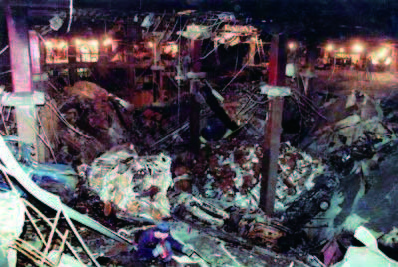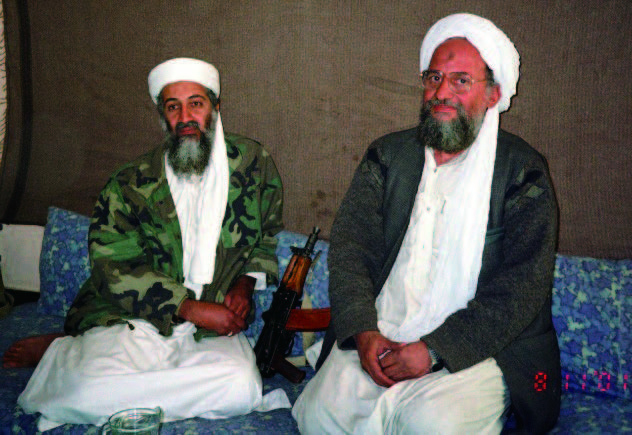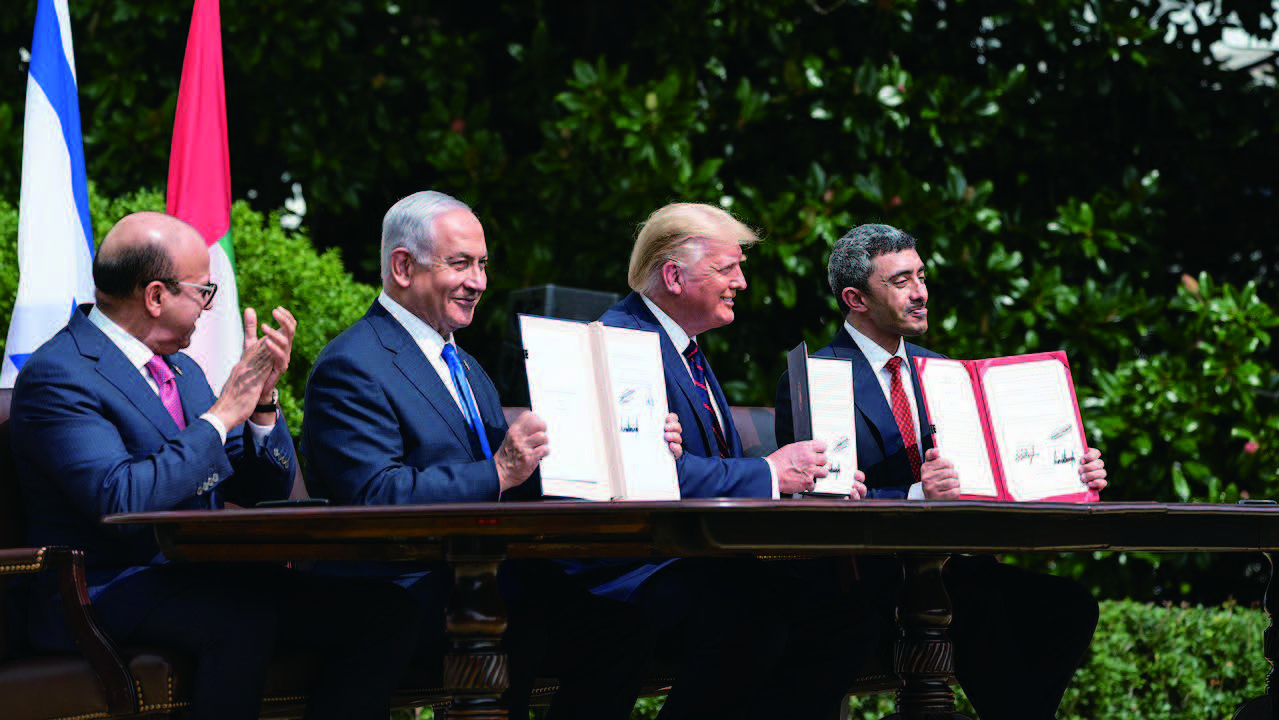Japan Earns Trust as a Peaceful Nation
30 Years of Progress in Middle East Peace and Japan’s Involvement
By Ikuzo Kobayashi, President, Salaam Association
From the Winter Issue of the electronic “Salaam Quarterly Bulletin”, No.44, Feburary 2023
1. Is the past 30 years in Japan a “lost 30 years”?
Many Japanese economists are saying that “The past 30 years in Japan is a ‘lost 30 years’.” In 1989, the Nikkei Stock Average reached a high of nearly 40,000 yen. However, for the next 30 years, the stock price remained stagnant at less than 24,000 yen, down 40% from its peak in 1989. The economic growth rate has been low at less than 2% for the last 30 years. The nominal GDP has expanded from 420 trillion yen to 560 trillion yen, which is a growth of 130%, in the last 30 years but its share of the world economy has declined from 15.3% to 5.9%. This tells us that Japan’s gross domestic product growth is lowean that of emerging growth countries, a striking example of which is the fact that Japan has dropped from second place in the world in GDP to third place and replaced by China.
Japan’s international competitiveness was the highest in the world for four years from 1989, but in 2002 it dropped to 30th place and has not risen above 30th place since then. And while there were 111 companies ranked in the Fortune Global 500, which ranks the earnings of global companies, there are only 52 in 2019.
Clearly, from an economic viewpoint, it has been a ‘lost 30 years.’
So, has Japan gained nothing in the last 30 years?
(I will skip discussing what should be done to restore the country to a strong economy.)
2. 30 Years of Winning the World’s Trust in Japan as a Peaceful Nation
1) U.S.-Japan trade friction that used to be serious
In the 1980s, many talked about “Japan as No. 1”and Japan rose to the position of the second largest economy. However, criticism of the “free ride on the Japan-U.S. Security Treaty arose in the U.S. Congress, saying that “competition on the basis of economics alone is not fair.” It was conveyed to Japan as “Japan-U.S. trade friction” with images of Japanese cars being smashed with hammers. Prime Minister Nakasone took the situation seriously and immediately visited the U.S. and promised to make efforts for Japan’s international contribution and to eliminate the ceiling of 1% of GDP for defense spending.
2)Too late, Too little
Thirty-two years ago, Japan contributed $13 billion to the Gulf War. At that time, there was an uproar in the U.S. Congress. The words of scathing criticism of Japan were “Too late, too little.”
Let me briefly explain.
Kuwait was invaded by Iraq in the early hours of August 2, 1990. The UN Security Council voted unanimously on the same day to adopt a resolution for the “unconditional and immediate withdrawal of Iraqi forces.” On the 6th, a multinational force consisting of the United States, British, French, and Soviet forces was formed, and on the 8th, 4,000 U.S. fighters and paratroopers with fighter jets were deployed to Saudi Arabia. On the 12th, the Egyptian 3rd Mechanized Division arrived in Saudi Arabia and the joint Arab force was organized. At this point, U.S. President George Bush (father) confronted Japanese Prime Minister Kaifu and strongly requested “transportation cooperation.” Prime Minister Kaifu did not recognize the seriousness of the Gulf crisis that may place Saudi Arabia under the control of Iraq in addition to Kuwait and lead to the conflict between Christianity and Islam that could turn into a world war. Because of this, Prime Minister Kaifu could not make a decision. He did not respond by saying, “We will dispatch a squadron of aircraft to assist in the transport.” As a result, the government was overwhelmed by the opposition parties’ opposition against a military solution and could not dispatch the Self-Defense Forces aircraft before the war ended.
After the war ended, a naval minesweeper was dispatched to the Persian Gulf on April 26, and Japan’s face was not completely destroyed. Nevertheless, the critical sentiment mixed with disappointment toward Japan’s action after the war was reflected in the words “Too Late.”
Criticism of being too little; Japan’s business community took the matter too lightly and thought that it is enough to just pay for it. Unable to comprehend the seriousness of the situation, they tried to settle for $1 billion at first. The U.S. immediately criticized this as too little. The Diet then passed a resolution for the contribution of $4 billion, with the $9 billion supplemental budget passed after the war ended on March 6. (Too late also refers to this.)
Japan was exposed to the disgraceful appearance of acting only after being told to do so.
3) Fundamental review of international contributions and redefinition of the Japan-U.S. Security Treaty
A human contribution is indispensable for international contributions. Kaoru Yosano, the late vice chairman of the LDP Diet Affairs Committee who proposed the dispatch of minesweepers to the Persian Gulf at the time, recalled, “Even after all the hard work, Japan would lose credibility and become an orphan of the international community if it simply provided money.”
Japan’s international contributions were forced to undergo a fundamental shift. It is said that the late Mr. Yosano thoroughly studied UN peacekeeping operations (PKO) in order to make a human contribution. As a result, the UN Peacekeeping Operations (PKO) Cooperation Law was enacted in 1992. Under this law, the Self-Defense Forces were dispatched to Cambodia, Mozambique, the Golan Heights, and East Timor. The Self-Defense Forces were highly appreciated in each of the countries where they were deployed. Japan’s international contributions in partnership with the United Nations have built up a track record, and over the past 10 years, Japan’s reputation for international cooperation has been firmly established.
Another important review was Japan’s understanding of international affairs and the redefinition of the Japan-U.S. Security Treaty.
The Gulf War was started in anticipation of the turmoil that followed the end of the Cold War structure. And in Japan’s neighborhood, North Korea declared its withdrawal from the Nuclear Non-proliferation Treaty (NPT) in 1993, When President Lee Teng-hui made clear his intention to pursue independence in Taiwan in 1994, China conducted large-scale military exercises in the Taiwan Strait to intimidate Taiwan. The U.S. dispatched two aircraft carriers to the Taiwan Strait and succeeded in stopping China’s actions for the time being.
The “redefinition of the Japan-U.S. Security Treaty” became essential, and in April 1996, a summit meeting between Prime Minister Hashimoto and President Clinton was held, resulting in the following historic shift.
•The alliance has shifted from an emphasis on economic prosperity with a lightly armed military to a military alliance that includes contingency planning.
•Defense of Japan is expanded to include not only Japanese territory but also the surrounding Asia-Pacific region.
4) The War on Terror and the Deepening of the Japan-U.S. Security Relationship
On September 11, 2001, Al-Qaeda carried out multiple terrorist attacks simultaneously in the United States. The UN Security Council unanimously adopted UNSC Resolution 1368 on the following day, September 12. Prime Minister Koizumi, who was in power at that time, immediately enacted the “Special Measures Law Concerning Terrorism” and sent relief supplies to Afghan refugees by SDF transport aircraft. Japan then carried out refueling operations in the Indian Ocean.
In the 2003 Iraq War, Japan supported the U.S. and British military offensive against Iraq and responded with the Iraq Special Measures Law. The dispatch of the Japan Self-Defense Forces to Iraq under the Iraq Special Measures Law was carried out from December 2003 to February 2009. The purpose was to support the national reconstruction of Iraq.
These Japanese responses enabled Japan to contribute to peace in the Middle East under the national flag of Japan (Show the Flag). In addition, working with the U.S. and British military forces, Japan strengthened the Japan-U.S. alliance by deepening the relationship of trust. More importantly, the “War on Terror” has brought about the concept of “critical influence situations” in the face of a reality in which peripheral situations cannot be considered in terms of geography alone. In addition, operating under the United Nations Charter, which recognizes the right of collective self-defense, has made us realize that the exercise of the right of collective self-defense is a natural part of the current world situation.
Through these experiences, Japan’s concept of collective self-defense and international peace cooperation by the Self-Defense Forces bore fruit as the enactment of security-related laws in September 2015.
5) “Free and Open Indo-Pacific Security” supported globally
In April 2004, Nippon Yusen’s large tanker Takasuzu was targeted by an Al-Qaeda suicide bomber in Iraq. Although a Japan Maritime Self-Defense Force escort vessel was able to participate in refueling operations in the Indian Ocean, it could not be dispatched inside the Persian Gulf, which was under dispute. On this occasion, the British ship Norfolk deployed in the Persian Gulf blew up a small terrorist speedboat after a firefight 300 meters off the coast of Basra, the mooring point of the Takasuzu.
Piracy began to run rampant in the Gulf of Aden off the coast of Somalia around 2005. Japanese vessels account for 10% of all vessels operating in the North Arabian Sea. Japan was called upon by the international community to fulfill an appropriate defense responsibility accordingly. In July 2009, Japan enacted the Anti-Piracy Law.
Ten years later, in December 2019, Japan decided to dispatch its MSDF destroyers to the same sea area. Finally, Japan can now dispatch MSDF vessels to the Middle East. This was the result of then-Prime Minister Abe’s successful deployment of the MSDF vessels to the North Arabian Sea, having been entrusted by former President Trump to negotiate with Iran, a particularly difficult task.
In 2021, “La Perouse,” a joint exercise between the French Navy and Japan, the U.S., Australia, and India, was held in the Bay of Bengal, east of India. Germany and Japan held a German-Japanese 2 plus 2, and German frigates were dispatched to the Far East. The United Kingdom sent a carrier strike force, including the state-of-the-art aircraft carrier “Queen Elizabeth,” to the Far East. This is the fruit of the “Free and Open Indo-Pacific Initiative” advocated by then Prime Minister Abe. Free and open Indo-Pacific security gained global support, and surpassed China’s “One Belt, One Road Initiative.”
Furthermore, Japan’s role in mediating between Israel and Arab countries sharing many historical problems became appreciated with high expectations. These are also worth mentioning.
In terms of international contributions and defense security, Japan has gained the trust of the world as a peaceful nation over the past 30 years.
3. 30 years of progress in Middle East peace
1) Gulf Crisis and Gulf War of 1990-91
The Gulf Crisis caused a sense of crisis that it may escalate to a religious war in the entire Arabian Peninsula and even Judeo-Christianity versus Islam. However, the United States, European countries, and Arab and Persian Gulf countries cooperated centered on the United Nations and overcame the crisis. Iraqi President Hussein’s territorial ambitions were crushed. Iraq conceded defeat and Kuwait was liberated.
In the Middle East, which seemed to be all anti-American and anti-Israeli, the Oslo Accords were reached in 1993. In the following year 1994, a peace treaty was signed between Jordan and Israel.
The results show the advancement of peace in the Middle East. In other words, relations between Israel and the Arab countries have greatly improved, the Israeli-Palestinian issue has made great strides toward a solution, and peace in the Middle East advanced greatly.
2) Bin Laden who founded Al-Qaeda and the anti-American struggle
Al-Qaeda was formed in 1988 by Usama Bin Laden and his comrades who participated in the resistance movement against the Soviet forces during the Soviet-Afghan war. Bin Laden became interested in the Muslim Brotherhood during his college years. He provided financial assistance to the mujahideen in Afghanistan with property inherited from his father. Later, he moved to Afghanistan in earnest. In August 1988, he formed Al-Qaeda.
Subsequent anti-American terrorism by Al-Qaeda is listed below.


Omar Abdulrahman: spiritual leader of the Islamic Group (al-Gama’a al-Islamiyya).
He was the mastermind behind the World Trade Center bombing and the Luxor incident (November 1997, killing 58 foreign tourists, including 10 Japanese).

Bin Laden and Zawahiri
In February 1993, Usama Bin Laden conspired with the Islamic Group spiritual leader Omar Abdulrahman to bomb the basement of the World Trade Center.
May 1995 –Assassination attempt on Egyptian President Mubarak during a visit to Ethiopia.
November 1995 –Bombing of National Guard facility in Riyadh, Saudi Arabia, kills seven U.S. military advisors.
June 1996 –Bombing of U.S. military base quarters in Saudi Arabia. (257 dead, 400 injured)
February 1998 – “International Islamic Front against Jews and Crusaders” was formed under the joint names of Bin Laden and Zawahiri.
Bin Laden commanded, saying “Muslims are obligated to kill the citizens of the United States and its allies.”
July 1998 –Bombing of the U.S. Embassy in Kenya and Tanzania.(223 dead, 4,000 injured)
February 2000 – Attack on the U.S.S. Cole (Aegis destryer) off the coast of Yemen.
3) On September 11, 2001, Al-Qaeda’s terrorist attacks on the U.S. shook the world
Bush administration, which identified al-Qaeda founder Osama Bin Laden as the mastermind of the attack, demanded that the Taliban regime in Afghanistan extradite the mastermind. However, the Taliban regime refused to hand over Bin Laden. President Bush (son) launched an invasion of Afghanistan, and the Taliban regime collapsed within a few months. However, he was unable to arrest Bin Laden.
At the time, Al-Qaeda was a Sunni Islamic extremist group waging a global jihad and had already established a worldwide network centered on Afghanistan, Pakistan, the Middle East, and the African region. The fight with terrorism was therefore dubbed the “War on Terror.”
The 2003 war in Iraq was initiated within the context of an extension of the ‘war on terror’. The Iraqi Hussein regime collapsed easily, and President Hussein was executed in December 2006.
But the ‘war on terror’ is a jihadism that deviates from However, the war continued as an anti-American and anti-Israeli battle, initiated by the jihadists and Al-Qaeda, self-proclaimed Islamists who deviated from Islam.
Ten years later, in May 2011, the United States killed Bin Laden in a raid and a firefight by special forces.
4) Arab Spring that began at the end of 2010
The Jasmine Revolution in Tunisia spread like wildfire as an Islamic mass movement aimed at overthrowing long-term dictatorships in Arab and Muslim countries in the Middle East. The Ben Ali regime in Tunisia was overthrown, the Mubarak regime in Egypt collapsed, and the radical Islamist President Morsi was elected in Egypt in 2012. In the following year, Egypt’s second revolution brought the military-backed President Sisi to power. In Libya, Colonel Gaddafi was shot to death by rebels, plunging the country into civil war. In Iraq, reconstruction appeared to be on track after the Iraq War of 2003, but Islamic extremists carrying out violent anti-regime terrorism expanded their influence. Anti-regime protests that sparked in Syria spread across the country, but the Assad regime enforced a relentless military crackdown that plunged the country into a quagmire of civil war in 2012.
The series of mass movements is known as the Arab Spring. It included a movement for Islamic-style democracy as an element. However, the excessive anti-American sentiment in the Arab Republic countries distorted sound political reform and the movement was hijacked by radical Islamic fundamentalism. Finally, it led to the birth of ISIS also known as the “Islamic State.” Arab countries could not win the battle against the ultra-radical “Islamic State” on their own and it took three years to bring down the“Islamic State” with military support from multi-national U.S. and European forces.
In the end, the Arab Spring ended in failure, leaving civil war situations in Syria, Libya, and Yemen. The Islamic State has been destroyed, but the Islamic State militant group remains, and the conflict between moderate Islam and Islamic extremism (IS, Al-Qaeda, etc.) is still ongoing.
5) Closer relationship between the Gulf States and Israel
Although the Arab Spring has led to demands for the more democratic political system in the Gulf states, moderate Islamic followers form its majority and the movement did not go along with violent and radical Islamists. When the Islamic State was born in July 2014, the six GCC (Gulf Cooperation Council) countries began to confront radical Islamists in earnest.
(1) In February 2015, the six Gulf states adopted a resolution of “Cutting off Funding for Terrorism, Strengthening Surveillance of Terrorist Controlled Areas and Daesh.”
The six GCC countries have consistently disliked the name “Islamic State” and instead used the name Daesh, Arabic word that means ISIL (Islamic State of Iraq and the Levant). The name Daesh is an acronym for the Arabic word (al-Dawla al-Islamiya al-Iraq al-Sham). It means “one who tramples and destroys” or “one who causes discord.”
(2) The six Gulf states stated that they “will restore peace through ‘Islamic tolerance and cooperation’” and “will also share information with Israel to defend against terrorism.”

Saudi Deputy Crown Prince Muhammad Announces Islamic Military Coalition
(3) The Sunni Gulf states also “shared interests with Israel in their concerns over Iran’s nuclear program.” Against this backdrop, in December 2015, the UAE established an Israeli government representative office in the International Renewable Energy Agency (IRNEA) in Abu Dhabi. (This was the first time that an Israeli diplomatic mission was permanently stationed in the UAE, which has no diplomatic relations.)
(4) On December 15, 2015, the same year, Saudi Arabia announced that it would form “Islamic Military Coalition against terrorism which consists of 34 countries and regions in the Middle East, Africa and Asia. Military Coalition is led by Saudi Arabia, with its operational headquarters in the capital, Riyadh, it would also look into cooperation with the U.S. and Europe. (Cairo Jiji)
The Threat of Terrorism for the Gulf States:
It is imperative to remove the threat of terrorism for the Gulf States, and it was the first priority over the threat from the Shiite Hezbollah in Lebanon and the Iraqi Shiite leader Sadr, and the Shiite Houthis in Yemen.
With the formation of the “Islamic Military Coalition,” Gulf States designated Islamic extremist groups as common enemies of the Islamic society and international society and expounded on the fight against terrorism.
In 2017, President Trump embarked on a campaign to mop up the Islamic State after designating Islamic extremism as a terrorist organization. Thirty-seven Arab and Muslim countries supported President Trump’s mop-up operation and the Islamic State collapsed.
6) On September 15, 2020, Israel, the United Arab Emirates (UAE), and Bahrain agreed to normalize diplomatic relations and signed the agreement. (Abraham Accords)

Abraham Accords: Peace treaty and normalization of diplomatic relations between the United Arab Emirates and the State of Israel. Photo from left to right: Bahraini Foreign Minister Zayani, Israeli Prime Minister Netanyahu, U.S. President Trump, and United Arab Emirates Foreign Minister Abdullah (from Wikipedia).
Abraham Accords Peace Agreement: Treaty of Peace, Diplomatic Relations and Full Normalization Between the United
Arab Emirates and the State of Israel
Sudan and Morocco followed, bringing the total number of Arab countries in diplomatic relations with Israel to six, including Egypt, which concluded diplomatic relations in 1979, and Jordan, which concluded diplomatic relations in 1994.
Looking back over the past 30 years, peace in the Middle East has progressed past the eighth station.
The Middle East desires peace and expects Japan’s active presence for peace.
